Central Asia is one of the most attractive and at the same time, the least explored touristic destination. The Great Silk Road that played a huge role in the history of whole civilizations passed through the countries of Central Asia and this was one of the main triggers for the development of the countries.
The land that is called Central Asia occupies the territory between the Caspian Sea and China. Five countries are located on the territory; Kazakhstan, Kyrgyzstan, Tajikistan, Turkmenistan and Uzbekistan. It is one of the largest semi-arid areas with several climatic zones. The whole territory is far from ocean and dominating climate is dry; mid-latitude desert on the south of Kazakhstan, western part of Uzbekistan and Turkmenistan and eastern part of Kyrgyzstan, steppe climate on the central part of Kazakhstan, western part of Turkmenistan and Uzbekistan, humid continental climate dominating on the northern Kazakhstan, eastern Uzbekistan, Tajikistan and central Kyrgyzstan.
Seasons in Kazakhstan
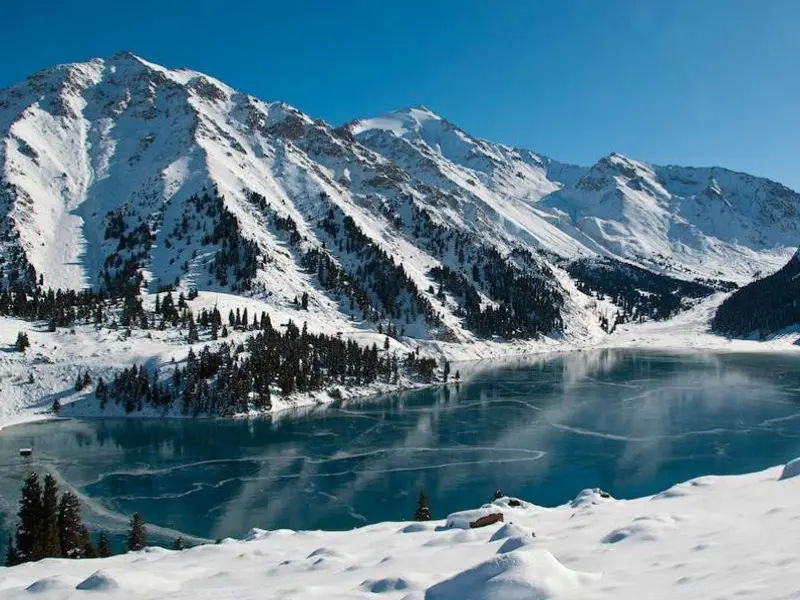
The largest country of Central Asia and the ninth largest one in the world is an interesting touristic direction with its oriental culture mixed with modern lifestyle. Kazakhstan is a unique country where the guests can enjoy all four seasons. The dominating climate on the territory is continental with cold winters in the northern part and hot summers in the South.
Spring is one of the brightest seasons of Kazakhstan with warm and sunny days and cold evenings up to May. The average temperature is about 150C. The best season to visit Kazakhstan in late April and early May. The vast steppes of Kazakhstan are all covered with bloody red and yellow tulips and it looks absolutely stunning.
Summers are hot and dry in Kazakhstan. The temperature may vary depending on the altitude. The average temperature for the hottest July month is 290C and 260C for the rest two months. In addition, it is the season of sweet melons and berries.
From the second half of October, it starts getting colder at night. Overall, falls are warm and sunny with the temperature of 200C in September and about -30C in the second half of November. Autumn is the season of hunting in Central Asia.
Winter is quite cold in Kazakhstan with an average temperature of -200C but there may be frosts up to -500C. Winter days are mostly sunny; just perfect for skiing in the mountains.
Seasons in Kyrgyzstan
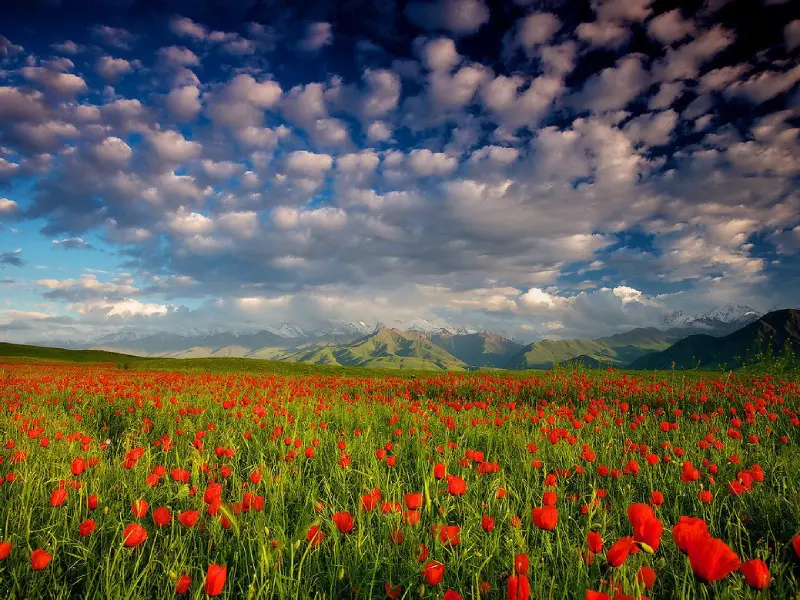
Due to the continental climate, the weather in Kyrgyzstan is very much like Kazakhstan’s weather. Summers are hot and sunny while winters are rather cold. The one peculiarity of the climate is that seasons in Kyrgyzstan have different length. Thus, summer may last from May to September, warm weather of the fall may please the locals up to December and winter may last from December to February.
Spring starts in March in the valley and in the second half of April in the mountains. The weather is typical for spring with snowy days in the first half of March and frequent rains. The average temperature is 90C for March and about 230C for May.
Summer is quite wet in Kyrgyzstan. In the mountainous regions, it is mostly cool with the average temperature of 50C while in the lowlands it is hot; the weather is perfect for beach holidays and trekking in the mountains.
Autumn begins from the second half of September with warm and sunny days getting colder. September is the end of the touristic season in most regions of Kyrgyzstan. Travel is possible in the lowlands until October but the weather is unstable.
Winter is snowy in the mountains making most of the regions hard to reach or even isolate them until spring. The average temperature on the lowlands is 10C and -100C in the mountains.
Seasons in Tajikistan
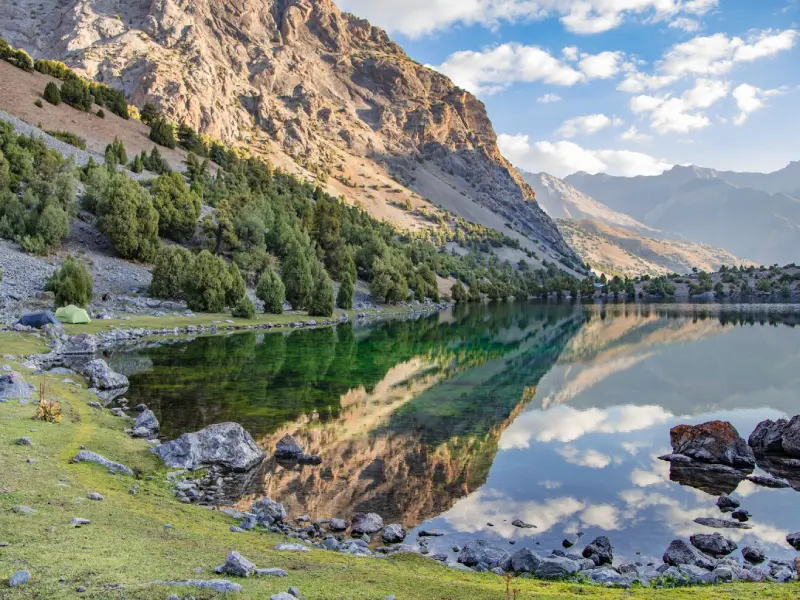
The climate of Tajikistan varies from lowlands to highlands. In the valleys, it is more about subtropical climate that changes to humid continental in the mountains.
At the plains, it is already getting warmer in March with an average temperature of 130C. It is the rainiest month of the year. In the mountains, there may be a drastic temperature drop at night. Closer to the second half of April the temperature reaches to 250C. The season of hiking starts in May when all the valleys and mountains are coloured in deep green.
Starting from the second half of May the temperature rises and you can already feel the summer heat. The average temperature for summer months is 300C with rare precipitation. July is the hottest month of the year and it is almost unbearable in big cities. While in the mountains, the weather is just perfect for adventure tourism (hiking, trekking, rafting, etc.).
The whole of September the weather is still hot. Gradually the temperature decreases in October with frequent rains. In highlands, you can already feel winter cold. Since November, a great part of the mountain regions becomes hard-to-reach or even isolated.
In winter, the difference in temperature in highlands and lowlands becomes even more dramatic. It may be -20 in the mountains and 40C at the plains. It is advised to avoid visiting mountains during winter months.
Seasons in Turkmenistan
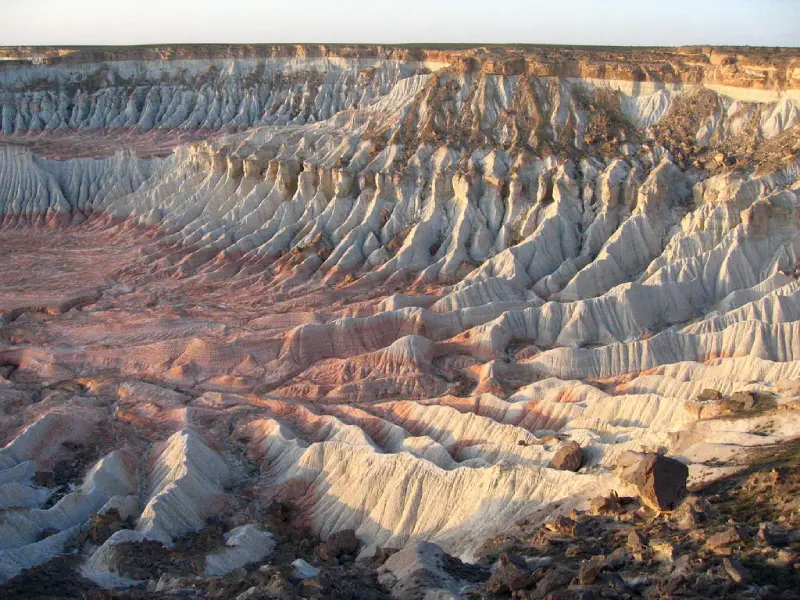
With a temperate continental climate, Turkmenistan enjoys mostly warm days during the year. The great part of the country is the Karakum Desert, the driest one in the world, which in its turn affects the weather on the territory. Turkmenistan is considered the hottest country in Central Asia.
The southern part of the country starts enjoying warm days since March while to the north the weather gets warm only in the second half of the month and first quarter of April. The temperature increases very fast and close to the second half of April it is as hot as in summer. The average temperature is 250C and it is the best season for adventure tourism.
Summer is really hot in Turkmenistan. It lasts up to the end of September with an average temperature of 450C. July is the hottest month when the temperature may reach 500C. It is uncomfortable in cities and the streets are empty during the day. The Caspian Seashore is the best for the summer months.
Autumn is warm with sunny days dominating. The temperature starts decreasing in the first quarter of October; still, even at the end of November, the weather is warm and dry with an average temperature of 140C. For travelling in Turkmenistan fall is also a great season.
Winter is mild on the territory with rare snowfalls at the plain. The average temperature is 50C. In the desserts, the frosty days are dominating and the temperature is below zero even in the daytime.
Seasons in Uzbekistan
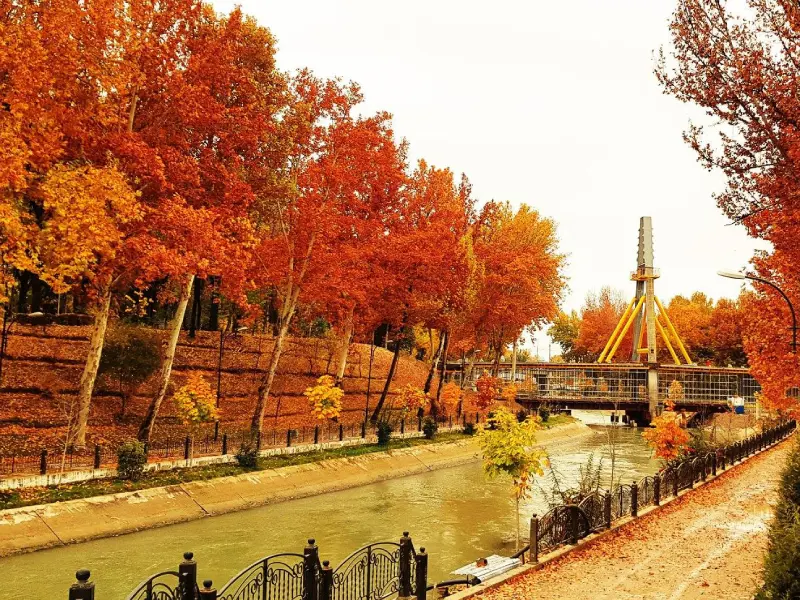
The continental climate of Uzbekistan brings hot summers and cold winters. Uzbekistan is called a sunny region because the sun is shining most of the year. Rains are possible during late autumn and winter. Snow is rare even during the winter.
Spring warmth can be felt in the air already at the beginning of February. Close to March, the rainy days become more frequent, the temperature is about 120C. In the second quarter of April, the temperature rises to 230C. The end of May is a real summer with hot days and warm nights.
Hot summer days last from 25 June to the first week of August with an average temperature of 320C and it may reach to 500C. It is the driest season of the year. It is too hot in cities and the best way to enjoy summer is hiking in the mountains.
Hot weather continues until the end of September and starting from October the temperature decreases to 200C. The first two months are ideal for travelling about the cities of Uzbekistan to enjoy ancient architecture and culture. Cool-weather may last until the first days of December.
Winter days are cold and windy. The lowest temperature is from December 26 to February 25 with an average temperature of -5 in plains and -250C in the mountains.
Choose the Tour to Central Asia you like most and we will organize your amazing holidays in 5 stans.













